Littleton, Colorado - Early 1900's Images
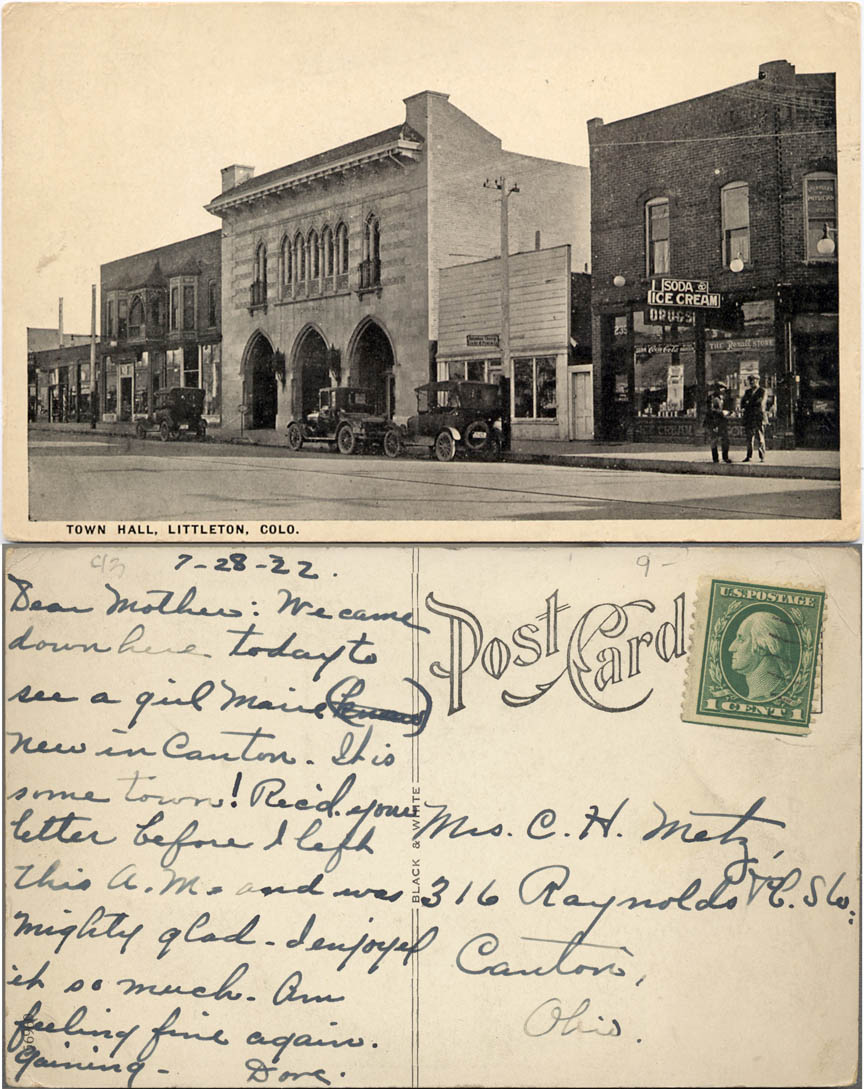
July 28, 1922 - Newly built in 1920, the Town Hall stands near the drug store, also conveniently dispensing soda and ice cream in downtown Littleton, Colorado |
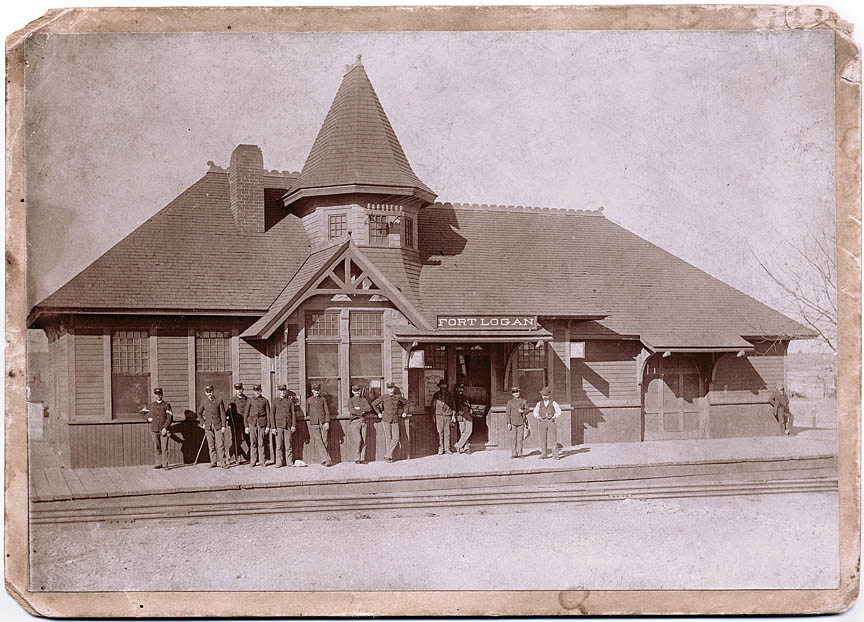
1890's - Built just after 1888, the Denver and Rio Grande Railroad Depot at Fort Logan stood just a few miles northwest of downtown Littleton. The line hosted four 'Uncle Sam' trains daily providing a convenient troop transport as well as an escape for soldiers during their off hours running from Denver to Fort Logan then to Littleton. The depot also served as the post office and telegraph station. |
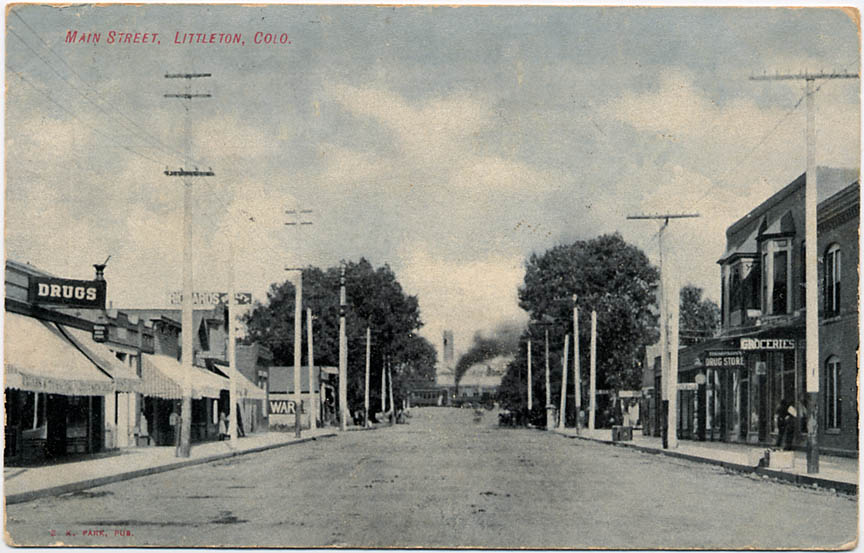
On a post card dated December 14, 1907, a smoking 'Uncle Sam' train rolls past downtown Littleton with the water tower rising in the distance, before the appearance of the Court House in 1910. Stopping at Fort Logan, which gave the train it's 'Uncle Sam' name, the small commuter line made stops from Littleton to Denver and was the Denver and Rio Grande Western's most profitable line. |
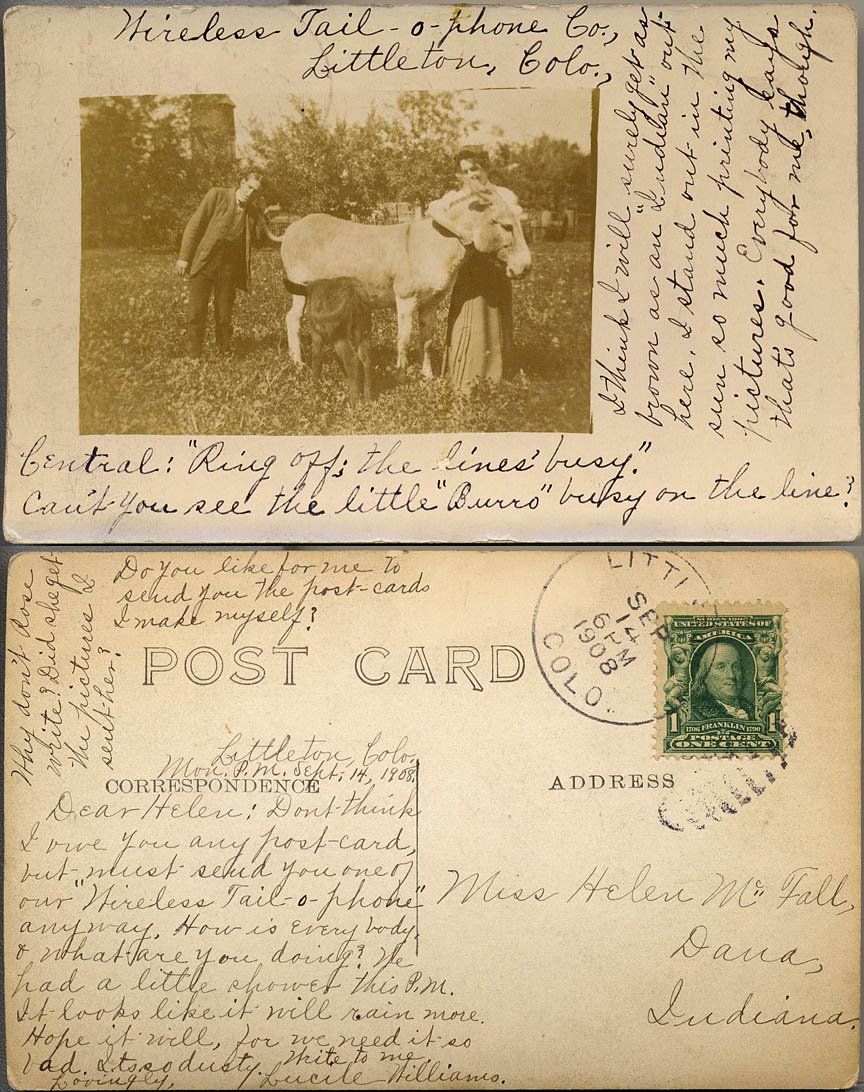
September 14, 1908 - Littleton Colorado - About a century ahead of their time, the Williams' idea of the Wireless Tail-o-phone would be more hazardous than today's wireless and cell phones! |
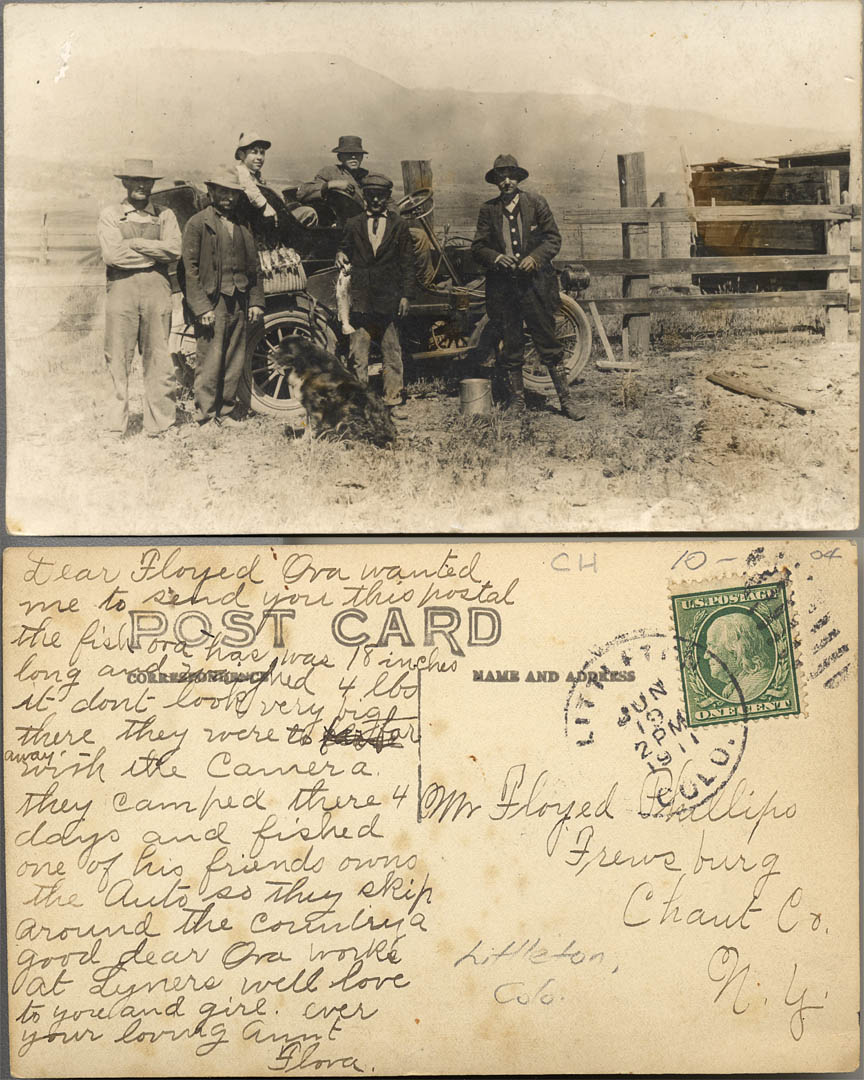
June 19, 1911 - Gone on a four day fishing and camping trip in Littleton, Colorado catching numerous fish including an 18 inch, 4 pound trout. |
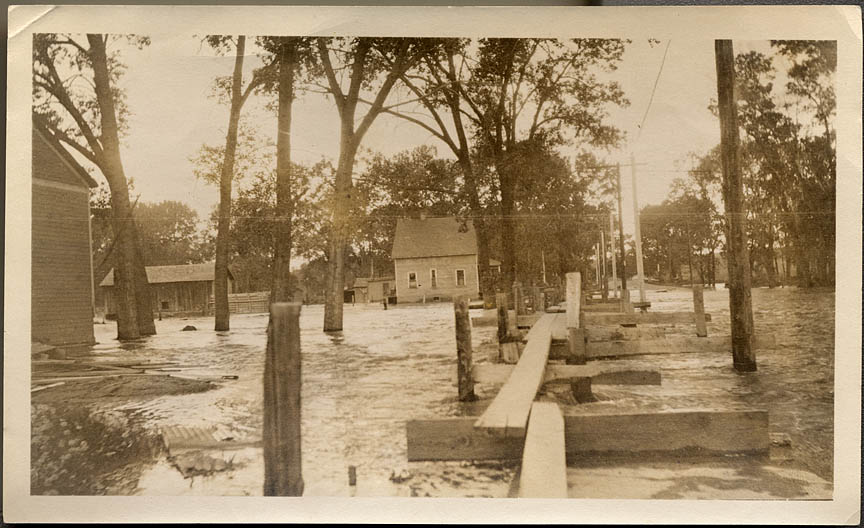
May 30, 1914 - The South Platte River floods over Bowles Avenue in Littleton, Colorado. |
|
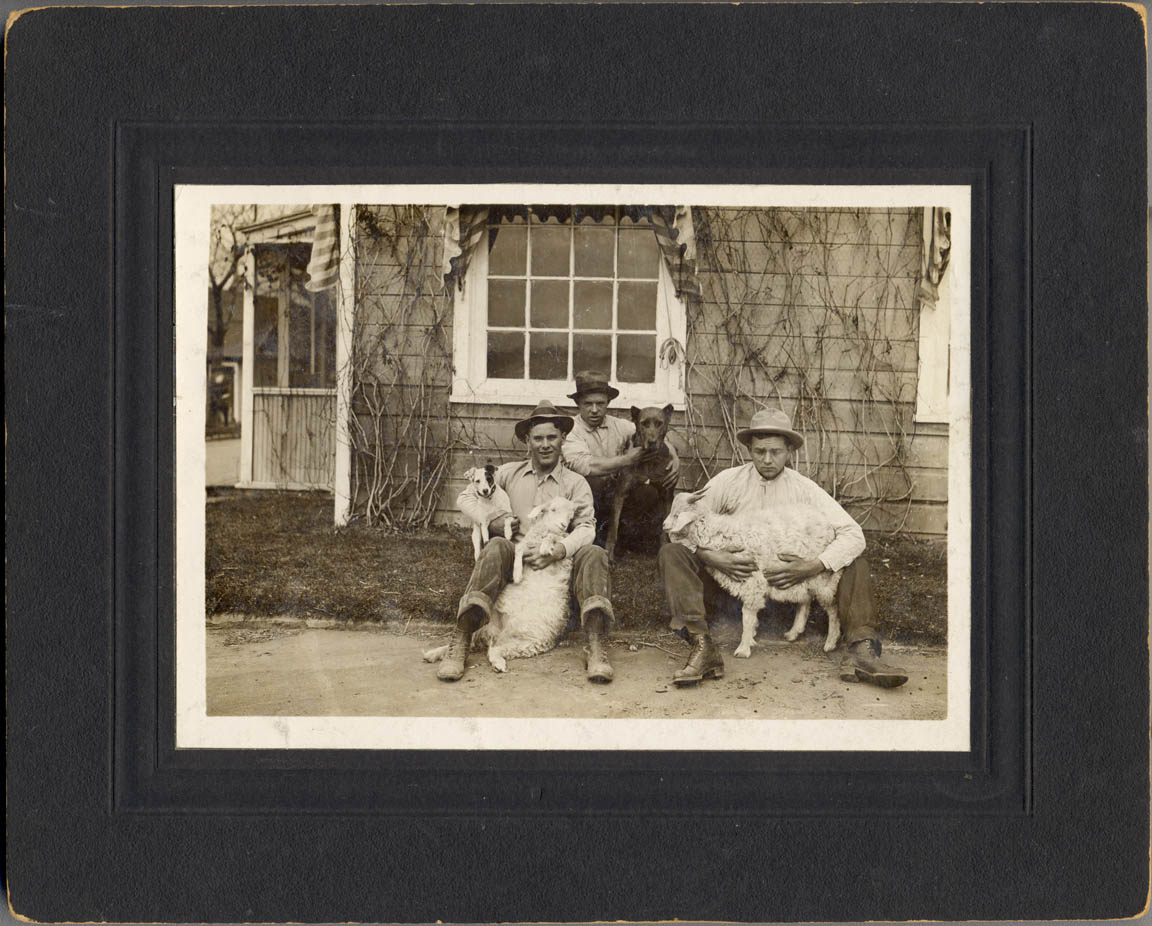
Early 1900s brothers with their favorite family pets. Stamped on the back of the photo with 'PHOTO BY BROWNING LITTLETON COLORADO'.
|
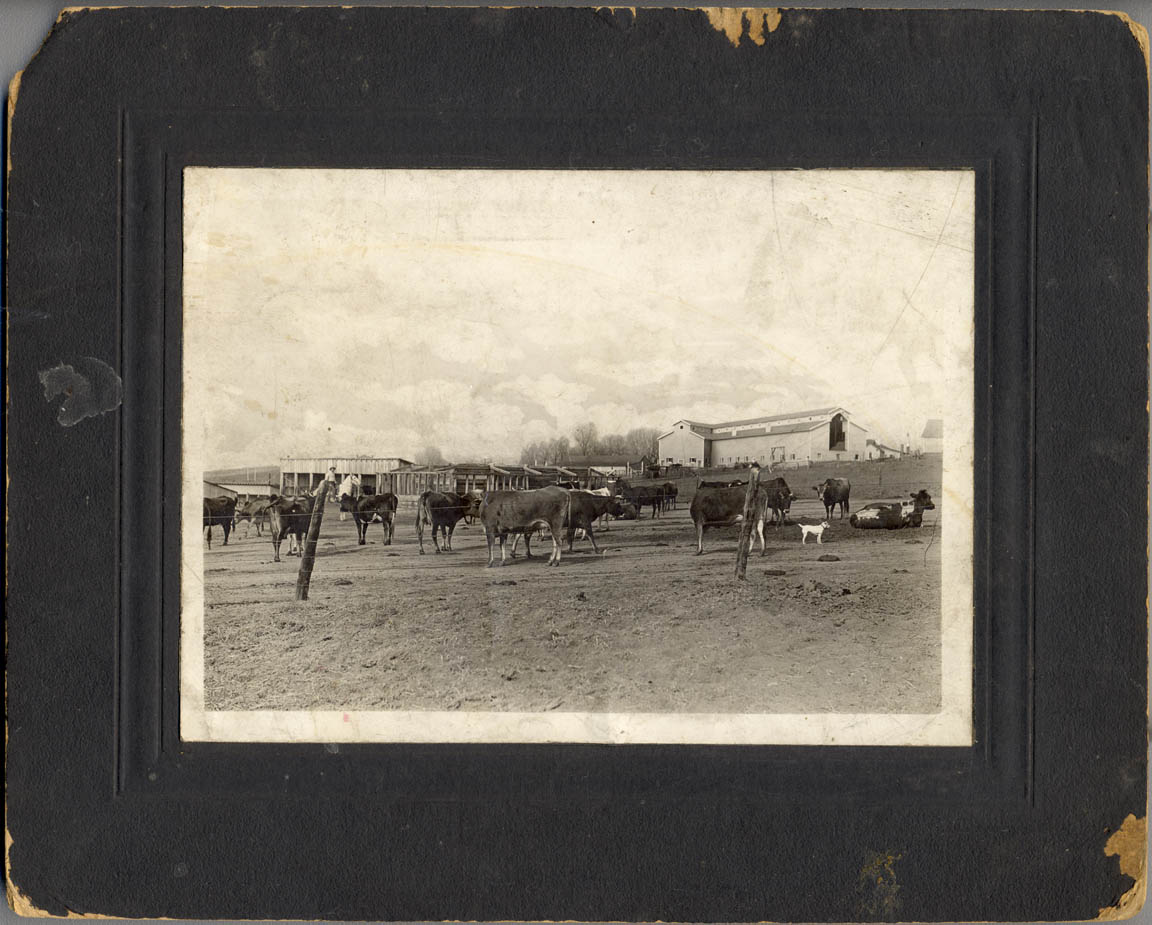
Early 1900s Littleton dairy farm and ranch with clouds added by the photographer in the darkroom. Stamped on the back of the photo with 'PHOTO BY BROWNING LITTLETON COLORADO'. |
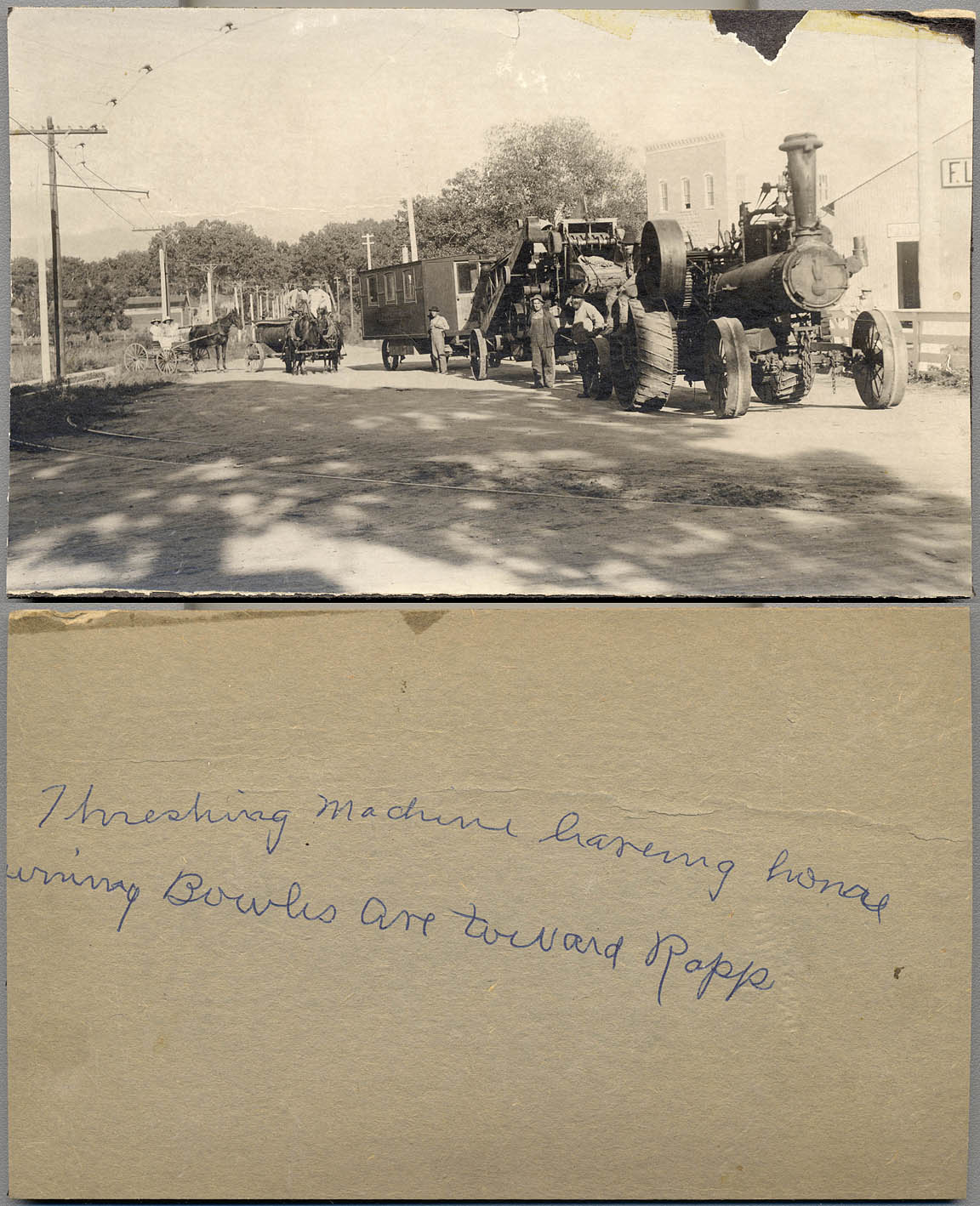
Around 1914, a wagon train with a threshing machine pulled by a Case 45 steam tractor followed by a water trailer, and horse and buggy with two ladies and their large hats. According to the caption, the group rolls onto Bowles Avenue near Rapp in Littleton, Colorado. |
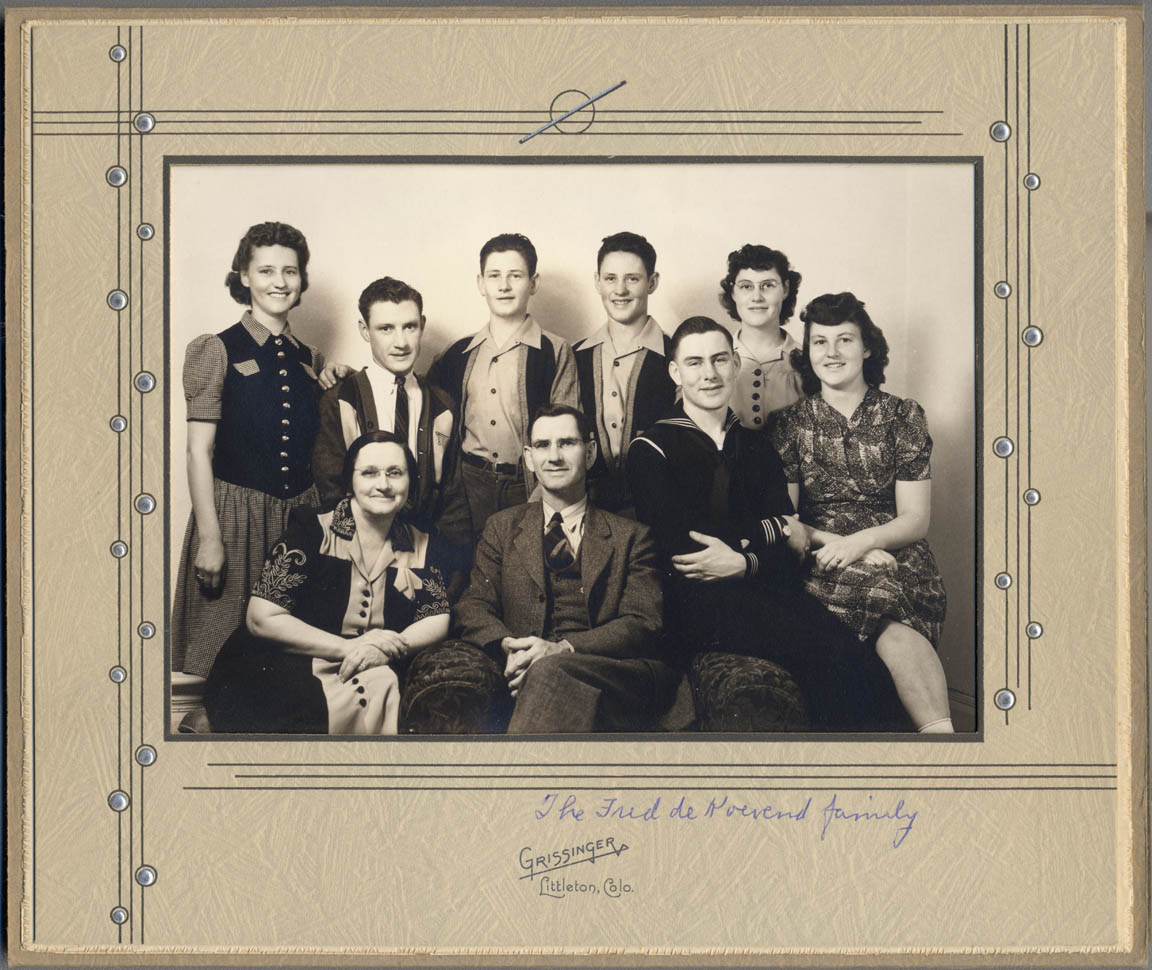
1920s DeKoevend Family Portrait by Littleton photographer John Grissinger - In the 1980's I played tennis at DeKoevend Park and photographed great horned owls and fox families along the adjacent High Line Canal. |
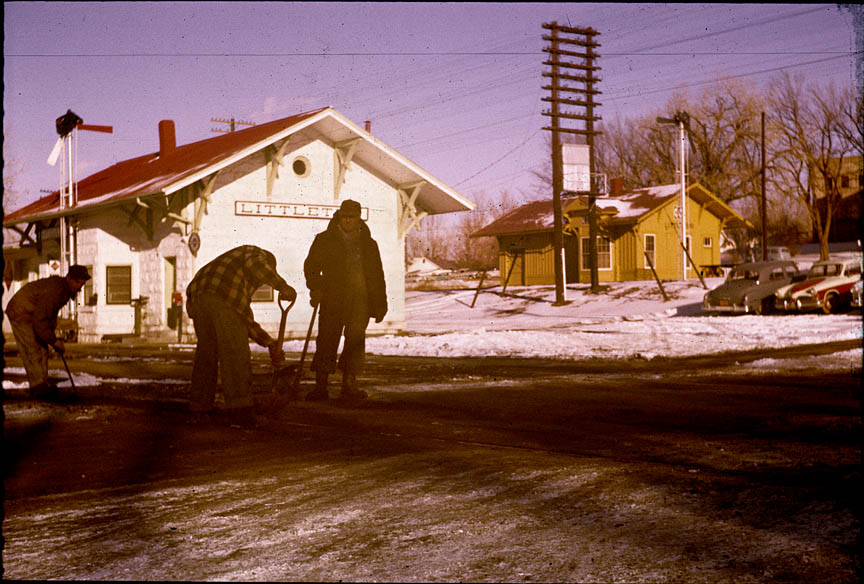
January 9, 1957 - In an early color slide, the Denver and Rio Grande depot built from the Castle Rock rhyolite stone and the Atchison, Topeka and Santa Fe depot stand behind 'RAILROAD MEN (SECTION HANDS) AT WINTER WORK CLEANING ICE OUT OF GRADE CROSSING, LITTLETON, COLO.' Today, both the stations are relocated and vehicle traffic crosses a bridge over the railroad tracks and trains. Notice the stacked telephone pole with dozens of individual telephone lines. |
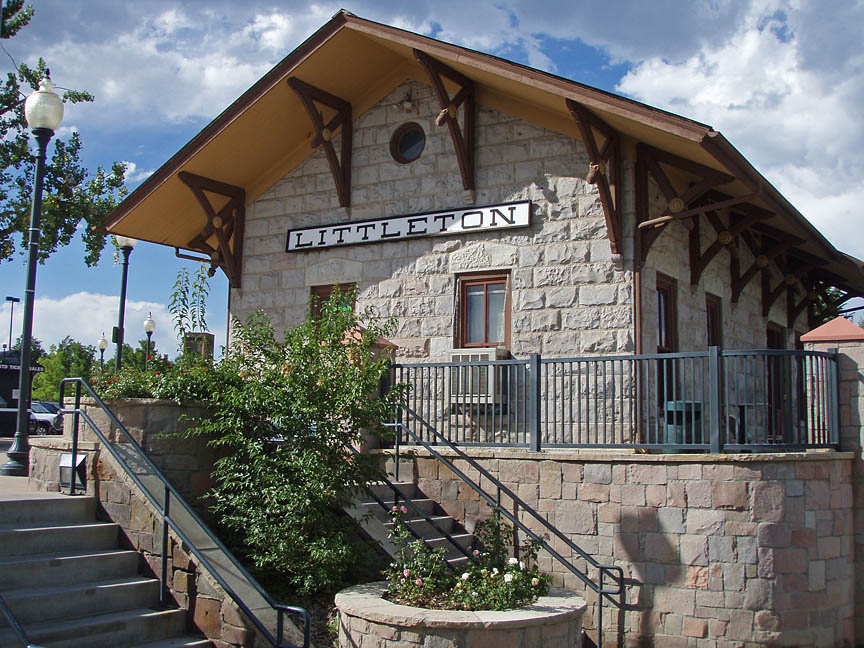
In 2007, the relocated Denver and Rio Grande depot with white paint removed shows the gray volcanic rhyolite and now stands at the Littleton light rail station. |
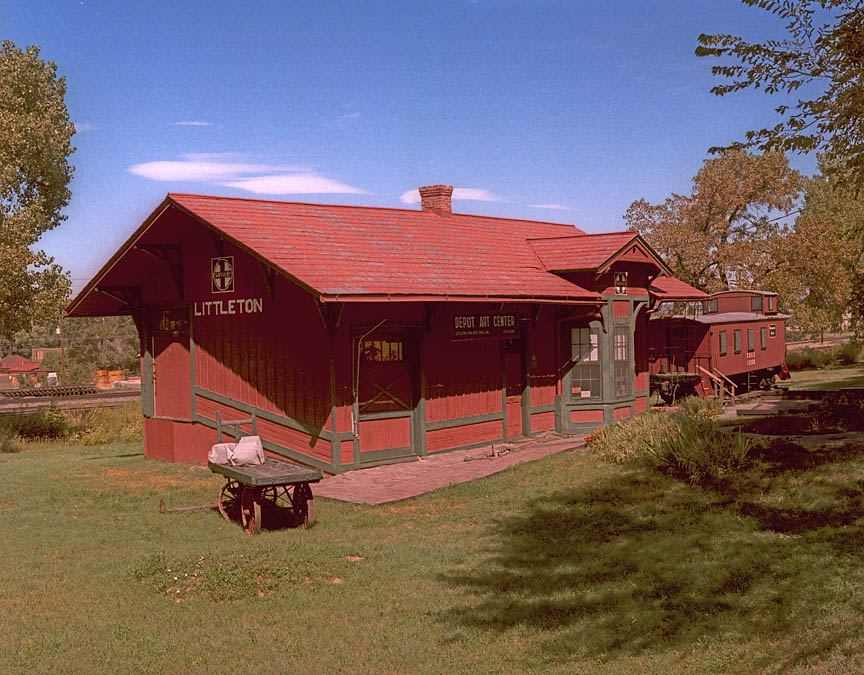
In 1983 the relocated the Atchison, Topeka and Santa Fe depot stands as an art gallery further north of its original setting. |
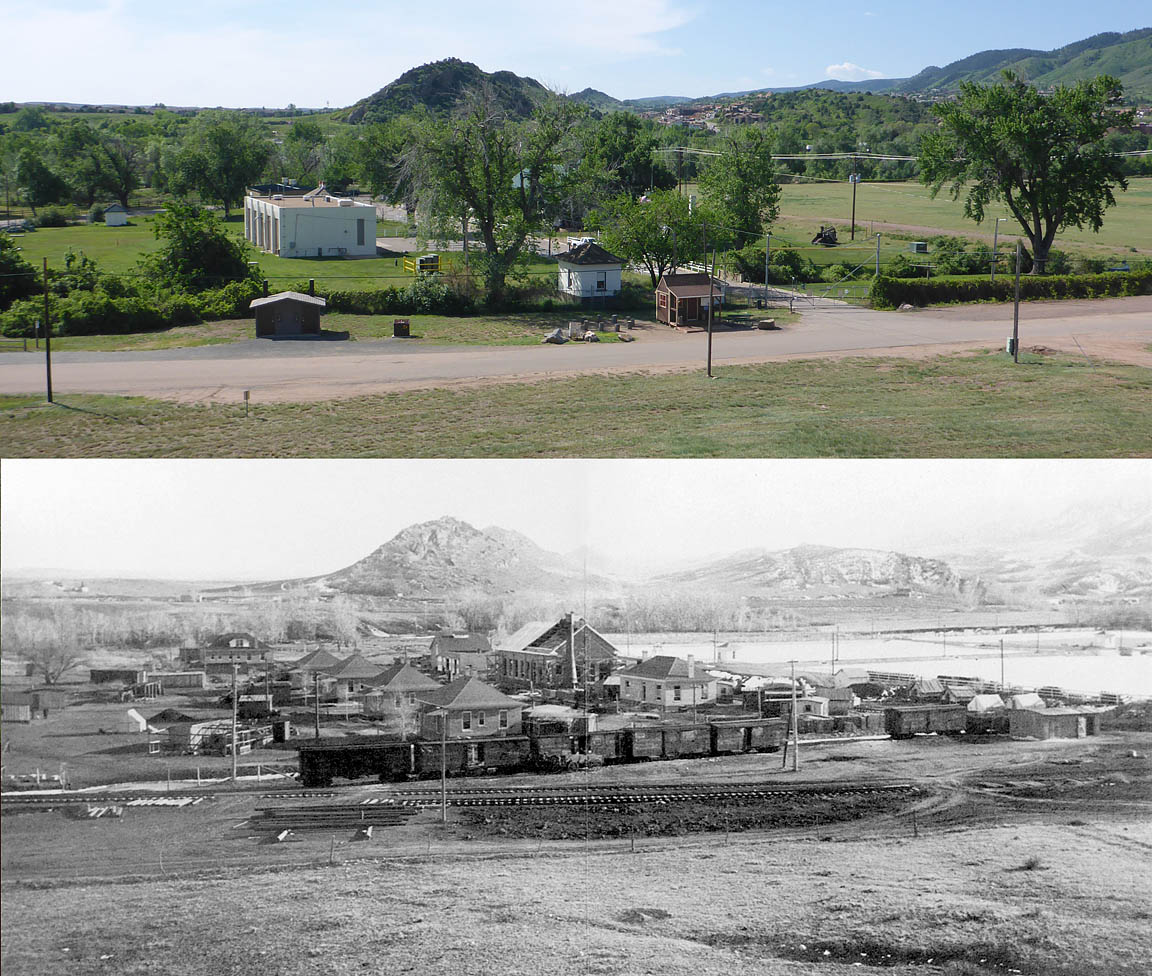
In a 1980s informational pamphlet, a photograph shows the early 1900s Kassler Water Filter Plant, a Denver Water Union Company which sat at the mouth of Waterton Canyon. In 2018, much has changed including the removal of the Colorado and Southern Railroad. |
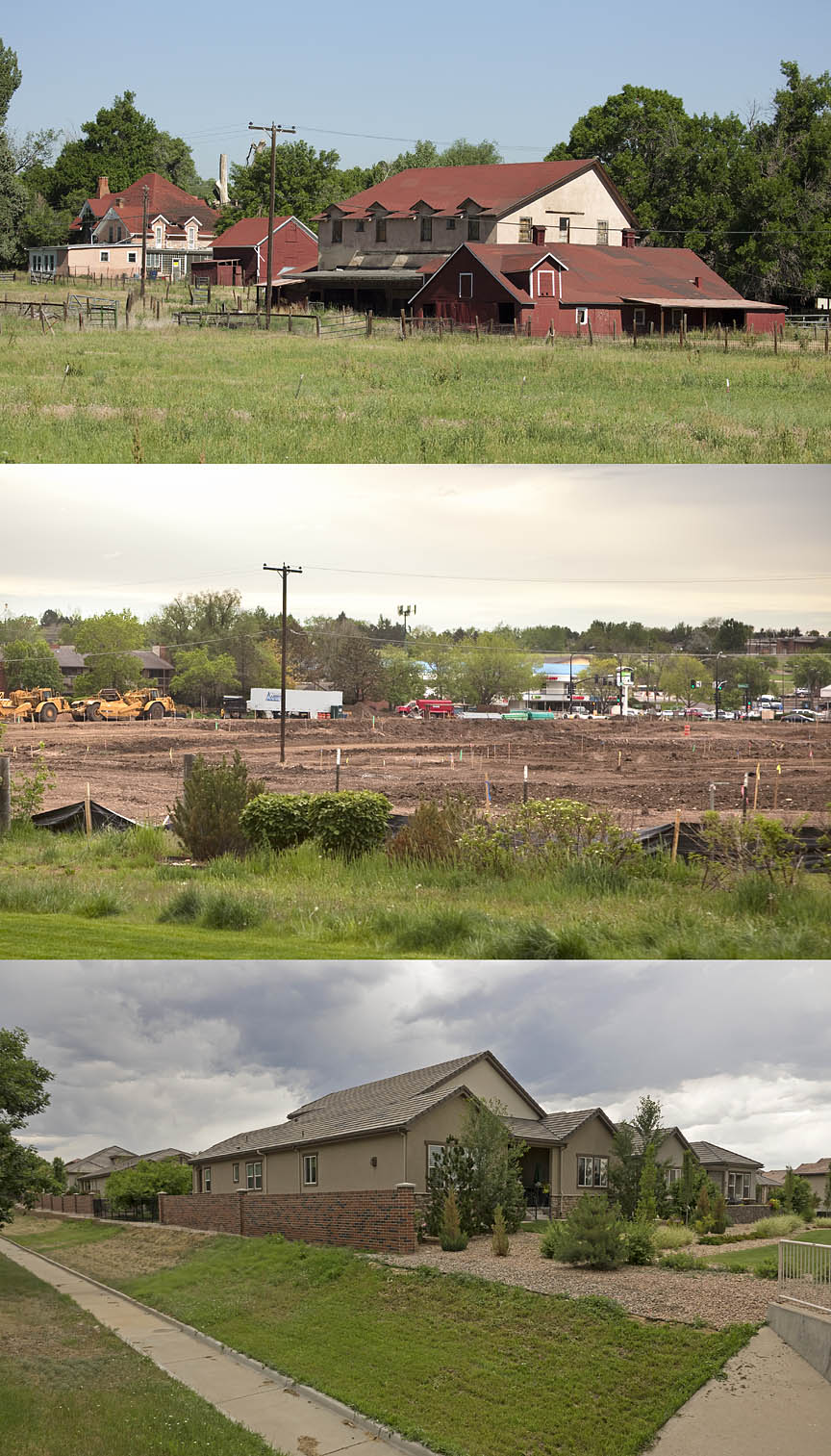
Built in 1884 by Joseph Bowles, the Willowcroft Manor and Farm was designed by noted architect Robert Roeschlaub. The Manor House was built in the Queen Anne style with steeply pitched gables and walls of pink sandstone from Castle Rock. Bowles named Willowcroft for the five black willow trees he planted. The property once stretched from the South Platte River to the Rocky Mountain foothills near Morrison.
During the 1920's after Bowles died, his son Walter, added a two story section to the manor which served as a Prohibition-era speakeasy. The two-story stucco and wood addition that supposedly housed a dance floor was moved eastwards from the Manor in the 1930s and served as a mechanic’s shop known as the 'Big Building'. Other outbuildings on the property dated back to the Joseph Bowles era, including a one-story stucco caretaker’s house, a brick smokehouse, and a clapboard horse barn.
The Bowles family, over the years sold off their 2000 acres and eventually, even the house and farmstead. Unfortunately, the final 10 acre farm property fell into the hands of the disinterested and despite a campaign to save it, the farm, listed on the State Register of Historic Properties was demolished in 2013 and 42 new soulless patio homes went up in 2014. |
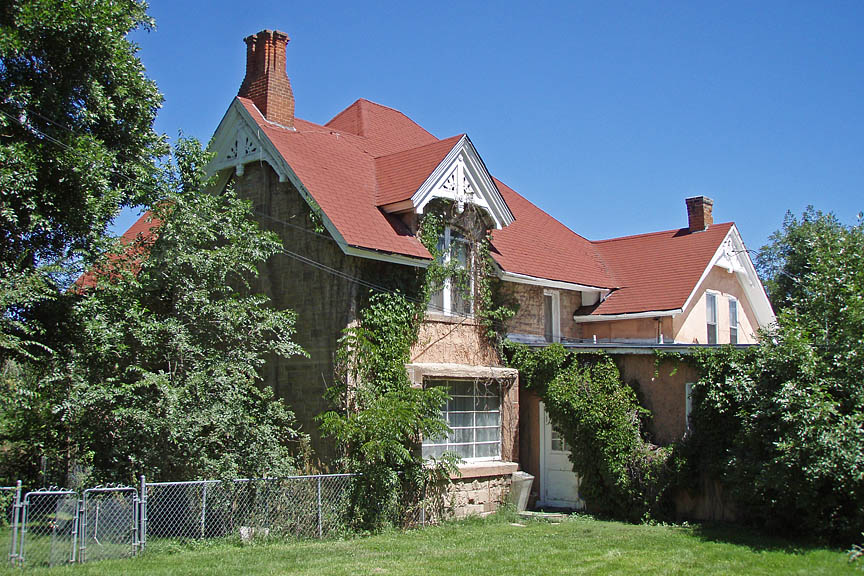
The 1884 built Willowcroft Manor House before demolition, the Columbine Valley's only significant historic site. |
|











